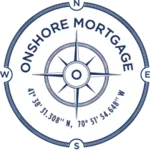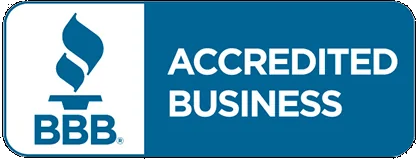

What to Expect on Your Home Purchase Journey
Prepare, research, and collaborate with experts when obtaining a mortgage for a new home. This guide helps you confidently navigate every step.
Purchasing a new home brings a mixture of excitement as well as it's fair share of challenges. Securing a mortgage is the crucial first step in this journey, enabling you to turn your dream of homeownership into reality. In this comprehensive guide, we'll break down the intricate steps involved in obtaining a mortgage to purchase your new home, ensuring you're well-prepared for the process.
Step 1: Preparing Your Finances
Before diving into the mortgage application process, it's essential to get your financial house in order. Ensuring that your financial foundation is strong before you start the home buying process can save you time, money, and stress.
- Check Your Credit Score: As per federal law, the three consumer credit reporting agencies: Equifax, Experian, and TransUnion, are required to furnish you with a free credit report once every 12 months (upon request). Borrowers are able to obtain this FREE copy of their credit report from AnnualCreditReport.com. It's always good practice to scrutinize it for inaccuracies, errors, or negative marks that could affect your credit score. A good credit score can lead to better mortgage rates and more favorable loan terms. As part of the pre-qualification process Onshore Mortgage, LLC. will run a "tri-merge" credit report which will be used to run your loan through the automated services provided by Fannie Mae & Freddie Mac to complete your pre-qualification.
- Evaluate Your Budget: It's crucial to have a clear understanding of what you can afford before entering any negotiations for buying a home. Take the time to analyze your personal monthly income and expenses and determine how much you can comfortably allocate towards a monthly mortgage payment. Onshore Mortgage, LLC. has a free mortgage payment calculator that can serve as an excellent "self-help" tool in helping to determine your monthly affordability, ensuring you don't take on more debt than your family can handle.
Step 2: Explore Your Mortgage Options
Understanding the types of mortgages available will help you choose the best fit for your personal situation.
- Fixed-Rate Mortgages: A fixed-rate mortgage is a type of home loan that boasts stability and consistency in both its interest rate and monthly payments. Unlike adjustable-rate mortgages (ARMs), where the interest rate can change over time, the interest rate of a fixed-rate mortgage remains constant throughout the entire life of the loan. This unchanging interest rate ensures that homeowners enjoy predictability in their monthly payments, allowing them to budget with confidence. Fixed-rate mortgages are available in various term lengths, typically ranging from 15 to 30 years, offering flexibility to borrowers based on their financial goals and circumstances. This mortgage option is particularly suited for borrowers who prioritize long-term stability, as it shields them from potential fluctuations in market interest rates. While fixed-rate mortgages may initially have slightly higher interest rates compared to ARMs, they provide the reassurance of knowing that monthly payments will remain unchanged throughout your loan term, providing a sense of security and peace of mind.
- Government-Backed Loans: Government-backed loans are specialized mortgage options that offer unique advantages to potential homebuyers. These loans are insured or guaranteed by federal agencies, making them more accessible and less risky for both borrowers and lenders. The three prominent types of government-backed loans include FHA loans, VA loans, and USDA loans. FHA loans, insured by the Federal Housing Administration, are designed for individuals with lower credit scores and smaller down payments. VA loans, guaranteed by the Department of Veterans Affairs, cater to eligible veterans, active-duty service members, and their families, offering them favorable terms and often requiring no down payment. USDA loans, backed by the U.S. Department of Agriculture, are designed for rural and suburban homebuyers with limited incomes, featuring low-interest rates and zero down payment requirements. These government-backed loans play a vital role in increasing homeownership opportunities for a wide range of individuals, offering flexibility, lower down payment options, and reduced risk for Lenders.
Step 3: Mortgage Pre-Approval
Getting pre-approved for a mortgage provides a clearer picture of what you can afford and strengthens your negotiation power. To obtain a mortgage pre-approval, expect the process to be more involved and require additional paperwork. A licensed loan officer will assist you in providing copies of your pay stubs, bank statements, and tax returns, among other documents. The loan officer will also review your credit report to assess your credit history and financial status. Once your information has been thoroughly reviewed by the Lender, they will issue a pre-approval letter indicating your approved loan amount and maximum purchase price. These amounts can vary slightly due to daily changes in mortgage rates and property specific taxes and insurance. The pre-approval can give you an advantage over other buyers by demonstrating your commitment to purchasing the property. It is important to note that making significant purchases or incurring new debts during this time can impact your pre-approval amount. Remember that receiving pre-approval does not guarantee your final approval. After making an offer on a home, the loan will undergo underwriting before final approval is granted.
- Gather Necessary Documents: Your lender will require documents such as paystubs, tax returns, bank statements, and your drivers license. Providing these documents upfront to your loan officer may expedite the pre-approval process. Self-employed borrowers may also need to provide additional documentation in order to prove their "ability to repay". A list of commonly needed documentation can be found on the Purchase Checklist section of our website.
- Submit Your Application: Complete the mortgage application provided by your Lender. They will review your financial information and credit history to determine the maximum loan amount you're eligible for.
- Receive Pre-Approval Letter: Upon approval from one of our wholesale mortgage lenders, you'll receive a pre-approval letter indicating the loan amount you can secure. This letter is valuable when making offers on homes.
Step 4: Finding Your Dream Home
With pre-approval in hand, it's time to start the house hunt.
- Work with a Realtor: Enlist the expertise of a licensed real estate agent to guide you through the home search process, making your experience smoother and more informed. Firstly, a realtor has access to extensive knowledge about the local real estate market and can provide valuable insights into trends and pricing. They can also help you navigate the complex process of negotiating a sales price and handling paperwork. Realtors will also provide valuable guidance on home inspections.
- Submitting an Offer: When you find the perfect home, your Realtor will help you craft a competitive offer. Your pre-approval letter demonstrates your commitment to the seller.The next step is to determine the purchase price and any contingencies that need to be included in your offer. Some common contingencies for a successful sale are home inspections, Home repairs, appraisal, financing approval (Mortgage Contingency), and possibly the sale of the buyer's current property. Once the offer has been drafted, it is presented from your Realtor to the sellers agent for review. After receiving an offer, the seller has three options: to accept, reject, or provide a counteroffer. If a counteroffer is made, negotiations will continue until the buyer and seller reach an agreement. Once the offer has been accepted and all contingencies have been met, the final purchase and sales will be drafted for signatures by all parties. it is important to note that you should make sure your "Mortgage Contingency Date" is tucked up as close as possible to your closing date, giving you the flexibility to provide a denial on your loan and receive your deposit funds back from the selling agent is you are unable to obtain financing.
Step 5: Complete Your Mortgage Application
Once your offer is accepted, it's time to proceed with the official mortgage application.
- Provide Detailed Documentation: Your lender will require a more comprehensive set of documents, including all income documents and property information, for a thorough assessment of your loan application.
- Underwriting Process: Once your documents are received your file will be submitted to the Lender for review. The underwriter will assess your credit score, employment history, and other financial documentation to determine the level of risk involved in lending them money. They will also review your debt-to-income ratio and other financial obligations to ensure that you are not overextended and can afford the mortgage payments. The underwriting process may involve multiple rounds of documentation requests and verifications. However, once the underwriter has completed their evaluation your loan will be "cleared-to-close", you can move forward to scheduling the closing.
Step 6: Closing the Deal
As you approach the finish line, there are a few final steps to take note of.
- Clearing Your Loan Conditions: Address any conditions set by the underwriter, providing any additional documents they may require. This may include updated paystubs, Proof of the deposit given to the Realtor with a paper trail of the money leaving your account, verifications of employment, homeowners insurance binder, appraisal and title work.
- Review Closing Disclosure: You'll receive a Final "Closing Disclosure" at least 3 days prior to closing outlining the terms and costs associated with your mortgage. Review it carefully to ensure accuracy.
- Closing Day: At the closing you will sign all the necessary documents such as the Note, Mortgage and Deed. At this time any additional funds need from you to close will be paid and once on record you will officially become a homeowner!
Conclusion
Navigating the process of obtaining a mortgage to purchase a new home requires preparation, research, and collaboration with professionals. Armed with this comprehensive guide, you're equipped to confidently tackle each step, from preparing your finances to closing the deal. Remember, your mortgage journey is unique, and enlisting the help of experienced lenders and Realtors to ensure a smoother and more rewarding path to homeownership. As always, feel free to also contact Onshore Mortgage, LLC. for all your mortgage needs!

Latest Posts


Grant R. Menard MLO NMLS# 17308
CLICK HERE
Onshore Mortgage

Massachusetts Division of Banks NMLS#MB1995582
CLICK HERE
The information contained in this site has been prepared by an independent third party and is distributed for educational purposes only. This is designed to give helpful tips on the mortgage process and is not intended to give legal advice.
Information is considered reliable but not guaranteed. This is not a pre-qualification, pre-approval, loan approval or commitment to lend. We arrange but do not make loans.
© 2020 Onshore Mortgage, LLC. all rights reserved.


.webp)
